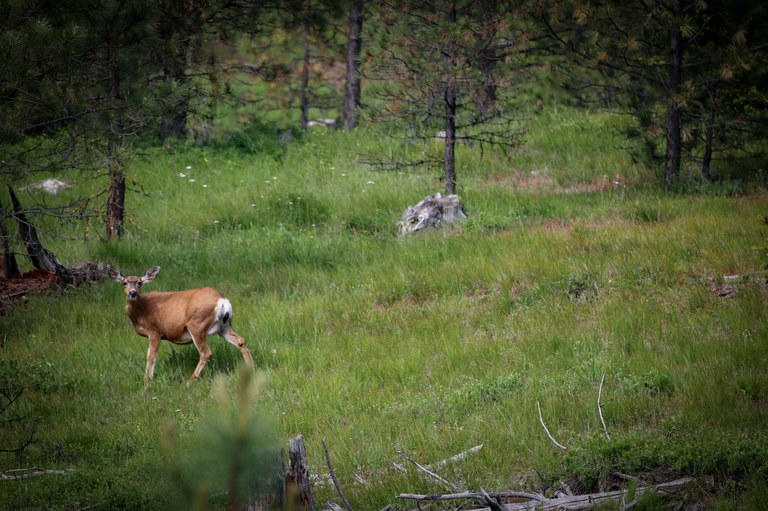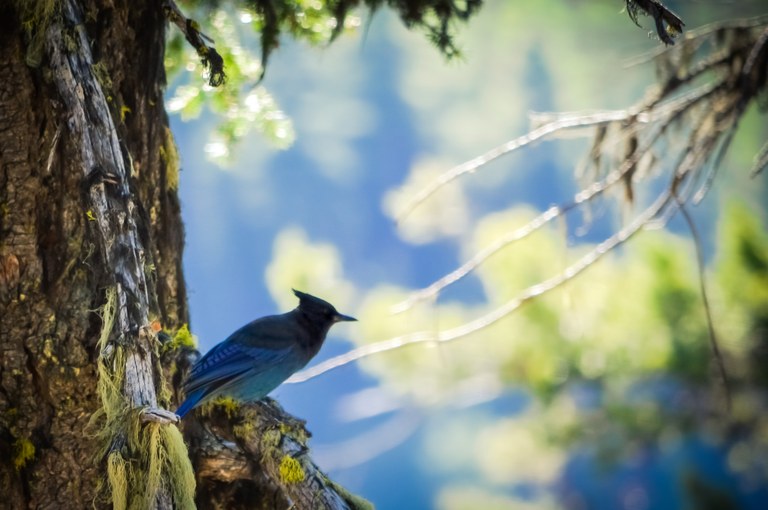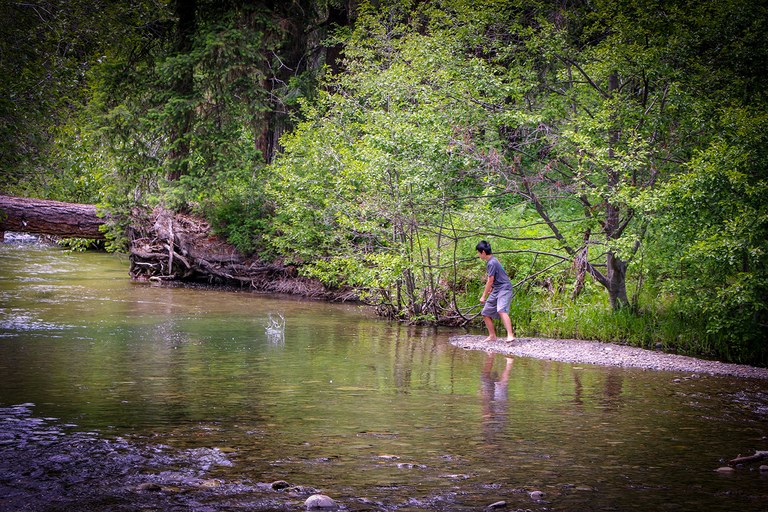 Washington Trails
Association
Washington Trails
Association
Trails for everyone, forever
How the Teanaway Community Forest will expand opportunities for hikers while boosting the recreation economy. | By Jessi Loerch
From her home in Roslyn, Laura Osiadacz can walk out her front door, up and over a ridge and into the Teanaway Community Forest. The Teanaway is a special place to her, one that she and her family have explored for years and have a deep connection to. The Teanaway has rivers, forests, meadows, stunning vistas and fascinating geology. Her husband’s family has been in the area for five generations, and they have long camped and hunted in the community forest.

Laura is a commissioner for Kittitas County. As part of that role, she serves on the advisory committee for the Teanaway Community Forest. It’s an area where hikers, bikers, horseback riders, hunters and so many others can experience the joys of connecting to the natural world. It’s also a powerful example of what communities can create when they come together to care for such a special place — and to build a vision for the future, where people are connected to a sustainable trail system that offers hiking experiences from short strolls to multiday expeditions.
Andrea Imler, WTA’s advocacy director, also serves on the advisory committee, and has since it was formed. Late last year, the advisory committee finished work on a plan that will guide recreation for the next 15 years in the community forest. The plan envisions a future where hikers, mountain bikers, horseback riders and many others can all have a place to play.

The Teanaway Community Forest. Photo By Taryn Graham.
With the recreation plan finished, there is now a vision for the future of recreation in the area. Agencies and partner groups are working on some of the early projects in the plan, including improvements to campgrounds and better signage and information. More specific details — such as where to improve trails or build new trails — will be guided by the overall vision of the plan, which designates zones within the forest for different levels of use, from light use on the east side of the forest to heavier use in the southwest area of the forest.
Some of the future goals include creating a solid connection between the forest and nearby communities, as well as between the community forest and nearby national forest lands.
The forest has approximately 140 miles of user-built trails. Sorting out the best plan for trails in the area will require careful work, guided by the goals of the plan. Supporters of the community forest worked hard to get the funding complete cultural resource studies, which will identify areas of cultural or historical significance in the area. It will take some time, but once that is completed, trail work can really get underway.

Larry Leach, the assistant manager of the southeast region of the state Department of Natural Resources, also serves on the committee. He was excited when the committee wrapped up the recreation plan, because it meant a path forward. He says he knows WTA and other groups such as the Back Country Horsemen of Washington and Evergreen Mountain Bike Alliance will be vital to making it all work.
The community has come together to create a plan that balances the needs of many different users who might have conflicting goals for the land. And locals such as Laura have witnessed how powerful this collaboration can be.
Andrea has a close personal and professional connection to the Teanaway, and has appreciated being able to work with other people who are so passionate and dedicated. She advocated for the state to purchase the community forest, which happened in 2013. And, on behalf of WTA, Andrea serves on the advisory committee to help guide the future of the forest. She also has a long history hiking and backpacking in the area.
“The Teanaway has always been a special place,” Andrea said. “People just love it, and there is such a passionate community working for its future. They’re some of the best people I’ve ever worked with.”

Map by Lisa Holmes.
Getting to this point has taken years, and it will be years before the full vision for the community forest is realized. But Laura has already noticed improvements, such as signage and work on the campgrounds.
She knows it’s vital work for an area that has the potential to provide year-round outdoor recreation for both visitors and those who already live there.
“Kittitas County is one of the fastest-growing counties in the nation,” she said. “Preserving our natural lands is a value that is important to our citizens — both for those who have been here for generations and for those who have moved to the area. One of the reasons they love being here is the rural nature of the community. Preserving these lands and having the forest is a way to ensure the lands are available for people to access.”
A bigger part of the vision for the future of the community forest is a plan to connect the forest to the surrounding communities of Cle Elum, Roslyn and Ronald using non-motorized trails. Trails connect the forest and cities now, but there’s not a formal, designated trail system. The dream for the future is a system of signed and maintained trails that clearly connect the communities and the forest.
Lauren Shuck, a leader on the Towns to Teanaway project, as the effort to connect the towns and the forest is known, envisions a future where people can easily travel, without cars, between the forest and towns. Residents could head out to the forest for a close-to-home adventure. And campers in the forest could walk into town for a burger or a coffee.
Eventually, trails will run from communities near the Teanaway into the community forest, and then farther into the national forest in the upper Teanaway. Hikers could leave town and choose their own adventure. They could take a short hike on a close-to-town trail, walk to the forest or keep going on a multiday backpacking adventure. For example, a backpacker could begin in Roslyn, hike into the community forest and follow a trail up the West Fork into the upper Teanaway, such as the area around Yellow Hill.

Outdoor areas such as the Teanaway are important to the area’s economy. A report for the state Recreation and Conservation Office from 2015 found that outdoor recreation in Kittitas County generates $185 million in economic activity per year and supports nearly 1,800 jobs.
During the Jolly Mountain Fire in 2017, when people weren’t able to come to the area for hiking and other outdoor recreation, the impact on the community was clear. Laura said the area looked like a ghost town.
Laura says having people visit the area for outdoor recreation helps provide a regular flow of customers for small stores, restaurants and gas stations. It offers those businesses a larger base of customers.
Andrea is excited by the potential of the community forest.
“Building a robust trail system in the Teanaway is, of course, a huge benefit to hikers who will have access to hiking trails from easy strolls to multiday backpacks,” she said. “But it will also give a boost to the gateway communities that will enjoy year-round benefits from outdoor recreationists visiting and spending their dollars within the local communities.”